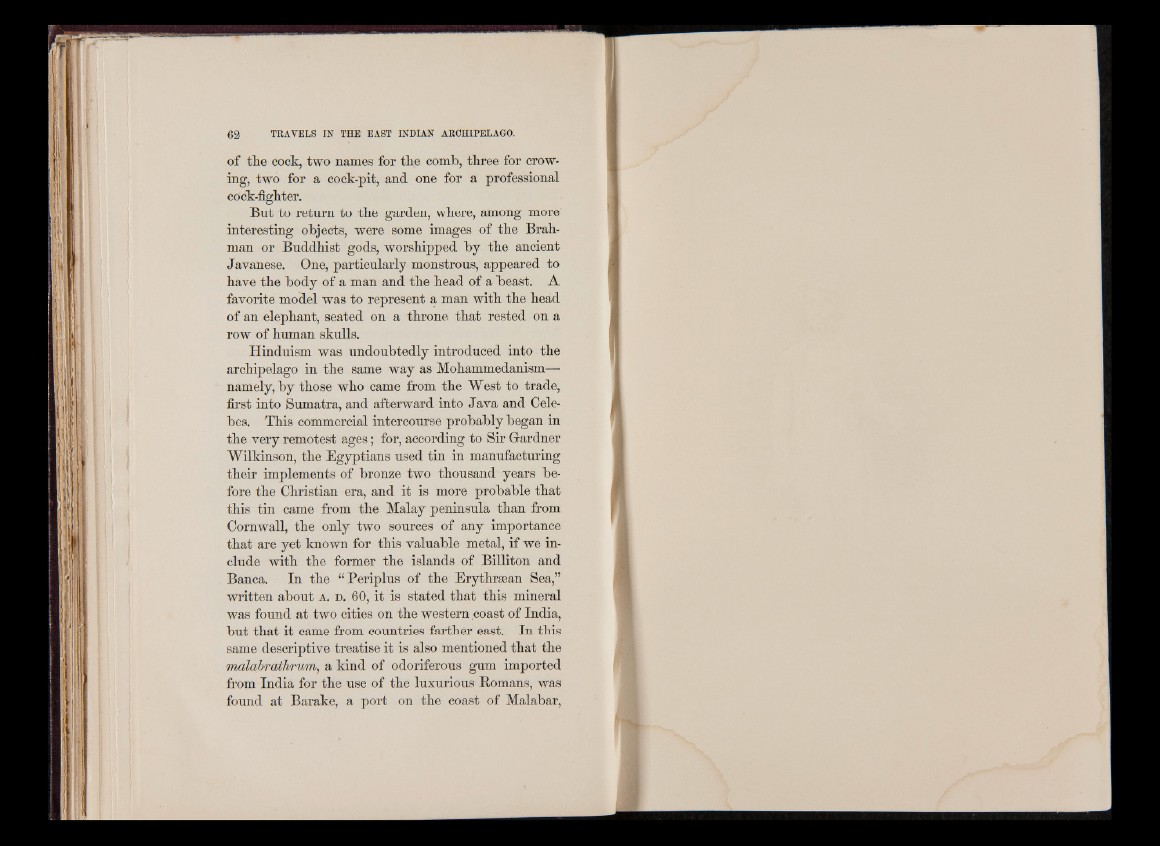
of the cock, two names for the comb, three for crowing,
two for a cock-pit, and one for a professional
cock-fighter.
But to return to the garden, where, among more
interesting objects, were some images of the Brahman
or Buddhist gods, worshipped by the ancient
Javanese. One, particularly monstrous, appeared to
have the body of a man and the head of a beast. A
favorite model was to represent a man with the head
of an elephant, seated on a throne that rested on a
row of human skulls.
Hinduism was undoubtedly introduced into the
archipelago in the same way as Mohammedanism—
namely, by those who came from the West to trade,
first into Sumatra, and afterward into Java and Celebes.
This commercial intercourse probably began in
the very remotest ages; for, according to Sir Gardner
Wilkinson, the Egyptians used tin in manufacturing
their implements of bronze two thousand years before
the Christian era, and it is more probable that
this tin came from the Malay peninsula than from
Cornwall, the only two sources of any importance
that are yet known for this valuable metal, if we include
with the former the islands of Billiton and
Banca. In the “ Periplus of the Erythraean Sea,”
written about a . d . 60, it is stated that this mineral
was found at two cities on the western coast of India,
but that it came from countries farther east. In this
same descriptive treatise it is also mentioned that the
maldbrath/rvm, a kind of odoriferous gum imported
from India for the use of the luxurious Romans, was
found at Barake, a port on the coast of Malabar,